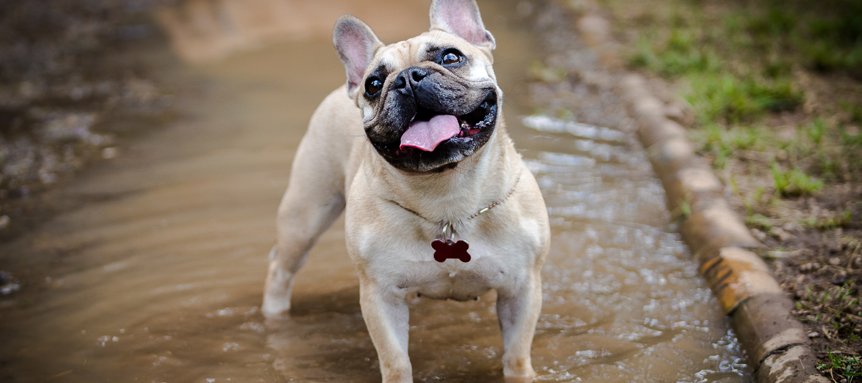As pet owners, we love our dogs, and we never like to see them in any pain. Unfortunately, many dogs develop health issues as they age, and these can be very scary to deal with. One common condition that many pet owners have to deal with is canine hip dysplasia. Because dogs affected often have to have surgery to help correct the problem, the words “hip dysplasia” can be very frightening as a dog owner.
What do you know about this condition? Is your dog predisposed to be affected? As a dog owner, it’s important to learn about conditions like hip dysplasia. Let’s take a look together.
What Is Hip Dysplasia?
Canine hip dysplasia is an inherited condition. When a dog has hip dysplasia, it means that their hip joint did not form properly. An improperly formed joint allows the leg to rotate too much, and this can lead to a number of other problems related to the excess wear and tear.
Hip dysplasia can develop at any point in a dog’s life. In many cases, it is middle-aged or geriatric dogs that show the most noticeable signs of this condition.
Common signs of this condition include:
- Stiffness
- Soreness when standing
- Avoiding exercising or running
- Limping
- Hopping
- Avoids stairs or other stressors
Depending on the severity of the dysplasia, affected dogs may go through any or all of the following treatments:
- Joint supplements
- Specialised diet
- Regular massages
- Specialised exercises
- Hip replacement surgery
- Physical therapy
Genetic Predisposal
Breeds of all sizes can develop hip dysplasia, but genetics puts some dogs more at risk. Since genetic factors play such a large role in whether or not a dog develops hip dysplasia, it’s important to be aware of which breeds of dogs have the highest risk of developing this condition.
Commonly affected dogs include:
- Larger breeds
- Bulldogs
- Mastiffs
- Retrievers
- Rottweilers
- St. Bernards
- Small breeds
- French Bulldogs
- Pugs
While the bloodlines of certain breeds like those listed above carry a higher risk of hip dysplasia, this inherited condition can affect any size or breed of dog.
Preventing Hip Dysplasia
Though genetics are the deciding factor in whether or not a dog develops hip dysplasia, there are ways to slow and prevent at-risk dogs from developing the most severe symptoms.
Tip #1: Manage Weight
Overweight and obese dogs are more likely to develop painful symptoms of hip dysplasia if they have poorly formed joints. This is because the extra weight puts unnecessary strain on their joints that can increase the wear and tear already caused by the joint shape.
If you are worried that your dog is becoming overweight, make sure that you are feeding them a high-quality dog food in the right portion size. If you are still concerned, talk to your vet about how to manage their weight more effectively.
Tip #2: Choose The Right Exercise
If your dog has shown any mild signs of hip dysplasia or you are simply worried about the risk, be smart about which types of exercise your dog does.
High-impact exercises with a lot of jumping and climbing can put lots of pressure on your dog’s joints. If their joints are predisposed to hip dysplasia, this can lead to early-onset wear and tear symptoms. Avoiding excess jumping is a good.
Additionally, swimming is a great exercise for dogs if they enjoy. Swimming allows the muscles around the joints to be worked without causing unnecessary stress or wear.
Tip #3: Make The House More Comfortable
While hardwood floors are all the rage in decorating right now, a slick floor surface can cause your dog to slip and put stress on their joints. Putting down rugs and carpeting in areas where your dog likes to run, jump, or lay is a good idea to preventing any sliding.
Additionally, setting your dog up with a firm, orthopaedic bed is very good for their joints. Sleeping on beds that are too soft or on the floor can cause joints to be pushed in strange positions for long periods of time which is bad for dogs predisposed to hip dysplasia.
Ease Your Dog’s Risk
It is not possible to prevent hip dysplasia, as it is an inherited condition caused by the shape of your dog’s joints. It is, however, possible to be aware of what the symptoms look like so you can make your dog as comfortable as possible if they start to exhibit signs of hip dysplasia.
Pay attention to how your dog moves, and always make regular vet visits to ensure that your dog is in great health. You’ll be happier seeing them happy and healthy!
About The Author
James Shore is the owner of Labrador Training HQ. He’s been training dogs for over 10 years and lives in New York with his black lab. Check out his complete guide to dog food here: http://labradortraininghq.com/reviews/dog-food
